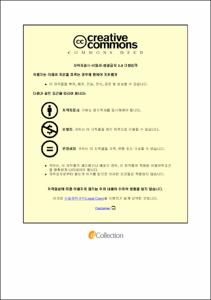종합편성채널 출범 이후 심야 토크쇼의 변화 연구
- Alternative Title
- A study on changes in the late-night talk show after the launch of general programming channels
- Abstract
- This study analyzes talk shows, a genre of TV programming constantly loved in the rapidly changing media market. Although broadcast stations have produced and programmed talk shows since the beginning of their operations, not enough studies were done to shed light on their importance. In keeping with the growing need for more research on talk programs, this study chronologically categorizes characteristics of talk shows to date, five years after the launch of the general programming channels, with a focus on shows aired between 11 and 12 at night.
This study seeks to answer the following questions:
1) What is the status of late-night talk shows on each channel?
2) Did the launch of the general programming channels bring about any changes to the late-night talk shows?
3) What impacts the changes to the late-night talk shows?
In the early 1980s when talk programs first appeared on TV, most of them were formal, standardized and education-oriented. It was not until the mid-1980s when elements of entertainment were incorporated into the programming. This trend became rapidly popular in the 1990s with the emergence of star-dependent shows. In the 2000s, the scene was dominated by variety talk shows.
Today (as of 18 September 2016), KBS talk shows tend to deal with general issues while MBC has more music in its shows. JTBC centers on current affairs whereas MBN shows appear targeting middle-aged and senior viewers. Channel A focuses on entertainment issues while TV Chosun centers on politics and North Korea. The terrestrial stations tend to produce “people-centric” shows whereas the general programming channels gravitate toward “issue-centric” shows.
Since the launch of the general programming stations, the conventional style talk shows have been nowhere to be found anymore whereas exploratory programs, posing as entertainment, grew in number. Furthermore, issues chatted about on shows have grown more diverse in greater detail. Viewers’ roles and influence increased as well.
In terms of casting, there are few shows today that are hosted by a female MC. Most shows hold group talks with multiple panelists. Another big change is identified in the composition of the panel, which is often filled with either experts or total strangers to the issue at hand.
As to the subjects, today’s shows tend to chat about one episode and quickly shift the focus to the next, rather than talking about one issue for an extend time. They provide prompt feedback on viewers’ demands and hot issues and attach greater importance to the “fun” aspect of the show.
Their efforts are further aided by the captions and computer graphics of various styles, aimed at maximizing audio and visual effects on their viewers.
These changes are driven by multiple factors: social situation, content, technology and broadcasting environment. Talk shows have evolved to meet the changes of the times, and are heavily influenced by who hosts the show, who the guest is and what is to be mainly discussed. Advances in media technology have transformed the way the talk programs are produced. Viewers’ demands are reflected in the programming more promptly than ever. Amid the shrinking market in the changing environment for broadcasters, the talk programs have undergone changes to their categorization from one genre to another and the composition of personnel on the show. Producers need to consider all these factors in programming future talk shows. Researchers need to continue their endeavor to study talk programs.
- Issued Date
- 2017
- Awarded Date
- 2017. 2
- Type
- Dissertation
- Keyword
- 토크 프로그램 토크쇼 종합편성채널 진행자 패널 심야 프로그램 MC talk program talk show general programming channel host panel late-night program
- Publisher
- 부경대학교 대학원
- Affiliation
- 부경대학교 대학원
- Department
- 대학원 신문방송학과
- Advisor
- 남인용
- Table Of Contents
- 제Ⅰ장. 서론 1
1. 문제제기 1
2. 연구목적 3
3. 논문의 구성 4
제Ⅱ장. 이론적 논의 6
1. 토크 프로그램 6
(1) 토크 프로그램 6
(2) 토크 프로그램 진행자 11
(3) 토크쇼 패널 14
(4) 토크쇼 구성 15
(5) 토크쇼 주제 16
(6) 토크쇼 영상 분석 17
2. 토크쇼와 종합편성채널 출범 이후에 관한 기존 연구 19
3. 지상파 심야 토크쇼의 역사적 변천 23
(1) 1980년대 23
(2) 1990년대 전반(1990-1995) 27
(3) 1990년대 후반(1996-2000) 30
(4) 2000년대 34
제Ⅲ장. 연구결과 41
1. 연구문제 41
2. 연구방법 42
(1) 조사절차 43
(2) 분석유목 43
3. 방송사별 심야 토크쇼의 현황 44
(1) KBS 44
(2) MBC 58
(3) SBS 65
(4) JTBC 65
(5) MBN 89
(6) 채널A 103
(7) TV조선 114
4. 종편 출범 이후 심야 토크쇼의 변화 124
(1) 토크쇼 124
(2) 출연진 127
(3) 구성 130
(4) 주제 131
(5) 영상 134
5. 변화 요인 134
(1) 시대상황적 요인 135
(2) 내용적 요인 138
(3) 기술적 요인 139
(4) 방송환경 요인 141
제Ⅳ장. 결론 및 논의 144
1. 결론 및 요약 144
2. 한계점 및 제언 153
참고문헌 155
Abstract 158
- Degree
- Master
- Files in This Item:
-
-
Download
 종합편성채널 출범 이후 심야 토크쇼의 변화 연구.pdf
기타 데이터 / 980.1 kB / Adobe PDF
종합편성채널 출범 이후 심야 토크쇼의 변화 연구.pdf
기타 데이터 / 980.1 kB / Adobe PDF
-
Items in Repository are protected by copyright, with all rights reserved, unless otherwise indicated.